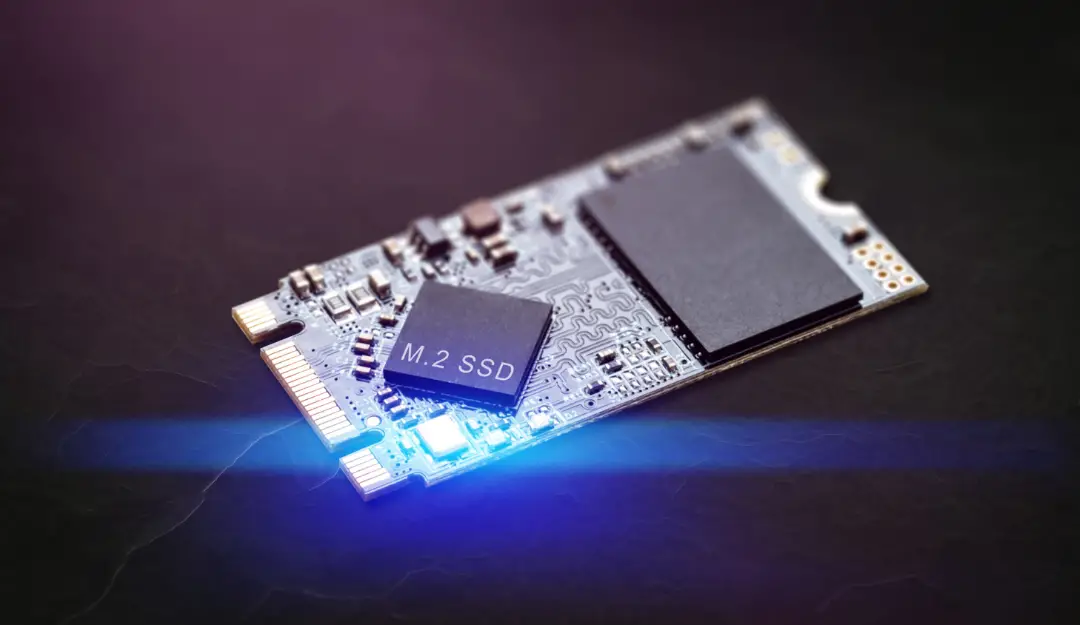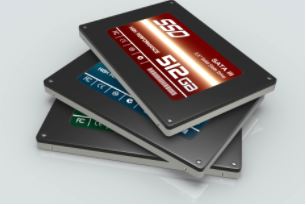
Content
- 1 Single sided vs Double sided M.2
- 2 What is a single sided M.2?
- 3 What is a double sided m 2?
- 4 Is my M 2 drive single or double sided?
- 5 Difference between single and 2 sided memory
- 6 Which is faster m 2 or NVMe?
- 7 Is Samsung 980 2TB single or double sided?
- 8 Is Samsung 970 Evo Plus single-sided or double sided?
- 9 What’s the difference between m2 and NVMe?
- 10 Which is faster m2 or NVMe?
Single sided vs Double sided M.2
If you’re reading this article, you’re probably wondering: what is the difference between single sided and double sided m.2 SSDs? Does it matter if I’m buying a new SSD for my pc or for an external drive? Which type of m.2 is better for gaming? If you want to make sure that you’re buying the right drive, you should keep reading to find out more about single-sided and double-sided m.2 SSDs.
What is an M.2?
If you’re in the market for an SSD, chances are that you’ve come across the term “m.2” at some point. M.2 is a type of storage that’s used in computers and laptops. It’s a form of a solid-state drive, or SSD, which means that it has no moving parts as traditional hard drives do. M.2 SSDs are typically faster than traditional drives because they have no moving parts to slow down access times.

What is a single sided M.2?
A single sided M.2 is a type of solid-state drive that has only one side of the PCB populated with NAND flash memory chips. This means that the controller chip is located on the other side of the PCB and is connected via a U.2 connector.
Unlike most other SSDs, single sided M.2 drives do not support NVMe protocols. Instead, they use the SATA III interface for data transfer. The benefit of this is that you don’t have to worry about compatibility issues between your motherboard and storage device as long as they both support the SATA III interface. It is designed for applications where space is limited, such as notebooks, ultrabooks, and tablets. The single-sided design allows for thinner form factors and provides more space for other components in your laptop.
Pros of single sided m.2
Easier to install into smaller devices like laptops or tablets.
Faster transfer speeds than the traditional 2.5″ hard drives due to the small form factor and no moving parts inside an SSD drive itself (therefore there is less mechanical latency).
Less power consumption by around 20% or more when comparing to a traditional 2.5″ HDD.
it takes up less space compared to a double sided M.2 SSD
What is a double sided m 2?
A double-sided M.2 drive is a type of SSD that has chips on both sides of the drive. By adding chips to both sides of the drive, double-sided M.2 drives can provide more storage capacity. Naturally, they have a larger form factor than streamlined M.2 drives with chips on only one side. Double-sided M.2 drives are not as popular as single-sided ones, mainly because they take up more room in your computer case. Some motherboards with M.2 slots only have one slot available and this means that if you want to add a double-sided drive to your system, you’ll need to remove the existing single sided drive first.
While single-sided M2 SSDs are popular for consumer devices like laptops and desktops, double-sided cards have become more common in servers and workstations. These have twice as many channels (four or eight), allowing for higher data transfer speeds and more capacity per drive bay. They’re also used in some desktop PCs where extra cooling is required such as gaming rigs due to their larger size compared to other form factors like mSATA or SATA Express cards
Pros of Double Sided M.2 SSDs
They are faster than regular SATA III drives
Offer more storage space
Is my M 2 drive single or double sided?
There are several ways to tell whether a solid-state drive is single-sided or double-sided. The easiest way is simply to check the label, but if that’s not available: A single-sided drive will only have chips on one side, while the other side will be empty. A double-sided drive has chips on both sides of the drive. Double-sided M.2 SSD drives are a little thicker and heavier than single-sided drives of the same form factor

Difference between single and 2 sided memory
Price
There is no straightforward way to determine whether a double-sided or single-sided M.2 drive will be more expensive. In general, double-sided drives are more expensive because they offer higher storage capacity. However, high-end single-sided drives with comparable storage can still command a substantial price premium.
Performance
Double sided M.2 SSDs have higher performance than single sided ones because they offer more memory channels and faster speeds per controller lane due to their ability to access memory from both sides of the PCB at once (and thus doubling bandwidth). This means that even though there are fewer components inside of them compared to single sided M.2 SSDs (due to the lack of space constraints), they still outperform their counterpart in terms of reading/write speeds and storage capacity capability
FAQ,s
Which is faster m 2 or NVMe?
The answer to this question depends on what you’re doing. In general, NVMe devices have much higher sequential read and write speeds than M.2 devices do, but M.2 SSDs are better for random I/O operations.
M.2 drives consist of a circuit board with a controller chip and an array of NAND flash chips mounted directly on it. They use the PCIe bus interface to communicate with your computer’s motherboard or expansion card slot.
NVMe devices are similar in that they also use the PCIe bus interface, but they’re based on a different kind of technology called nonvolatile memory express (NVMe). NVMe devices don’t have controllers or NAND flash arrays integrated directly into them; instead, they consist just of a controller chip that interfaces with your computer’s motherboard or expansion card slot via PCIe and communicates with one or more storage devices over a dedicated communication channel called an interposer cable. The interposer cable can be much longer than the stubby wires used by M.2 SSDs, which means that it can reach all the way back to the drive bay in your computer case instead of being restricted to its immediate surroundings.

Is Samsung 980 2TB single or double sided?
The 2TB 980 Pro is a single-sided design featuring Samsung’s Elpis 8-channel Gen4 x4 NVMe controller, a single LPDDR4 DRAM package, and two sixth-gen 3-bit V-NAND packages.
The M.2 form factor offers better cooling capabilities than 2.5″ SSDs and the 2TB capacity is perfect for those who need a ton of storage space in their laptop or desktop PC.
Samsung has been shipping its 3rd Generation V-NAND since 2017 so it’s no surprise that the new M.2 drives only come with 3rd generation chips instead of newer 4th generation chips like the 970 PRO NVMe SSDs that use 4th generation chips (9710).
Is Samsung 970 Evo Plus single-sided or double sided?
The Samsung SSD 970 PRO 2TB is a single-sided M.2 2280 form factor drive. The 970 PRO series is based on the latest V-NAND technology, which is fabricated in their new 2nd generation 3D V-NAND process. This technology allows for higher density chips to be produced, giving users more capacity per drive.
The 970 PRO uses Samsung’s new Phoenix controller, which has been optimized for sequential read performance. It also has a very powerful write algorithm that uses pseudo-SLC cache and is able to maintain over 1GB/s of bandwidth in some cases, even with 1TB of data stored on the drive.
This combination of high sequential read performance and strong write throughput makes it an ideal choice for professional applications such as video editing or content creation where large files are often accessed sequentially and written back in large chunks.
What’s the difference between m2 and NVMe?
These SSDs are comparable to most M.2 NVMe SSDs in most ways, including their lightning-fast transfer speeds. They’re the only difference between the two is how they connect to your motherboard–they utilize the PCIe slot instead of via an M.2 connector. And they’re much more expensive on average than the M.2 form factor NVMe SDDs. Why do I need an NVMe SSD? These drives are ideal for applications that require high performance and low latency, such as video editing, 4K video streaming, or content creation. They can also be used in gaming PCs to improve boot times and load levels in games (though the difference is often negligible).
Which is faster m2 or NVMe?
The answer is that it depends on your needs. NVMe drives tend to be faster than M2, but they also cost more money. If you’re looking for a boot drive for your computer, NVMe will probably be worth the extra cost. If you need storage space, then M2 will probably be a better choice because it’s cheaper and provides more space than an NVMe drive.
NVMe drives are faster than M2 because they use less power and have lower latency times than their M2 counterparts. However, NVMe drives are also more expensive because they use NAND flash memory instead of eMMC (embedded multimedia controller).
M2 drives are similar to SATA III or SATA II drives because they use an embedded controller inside them instead of having one built into the motherboard or CPU like an NVME drive does. This means that even though an M2 drive may not be as fast as an NVME drive, it will still perform better than a traditional SATA III SSD.






